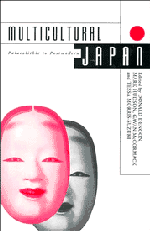Book contents
- Frontmatter
- Contents
- List of Figures and Tables
- List of Contributors
- Abbreviations
- Introduction
- Part 1 Archaeology and Identity
- 1 The Japanese as an Asia-Pacific Population
- 2 North Kyushu Creole: a language-contact model for the origins of Japanese
- 3 Beyond Ethnicity and Emergence in Japanese Archaeology
- 4 Archaeology and Japanese Identity
- Part 2 Centre and Periphery
- Part 3 Contact with the Outside
- Part 4 The Japanese Family
- Part 5 Culture and Ideology
- Afterword: Diversity and Identity in the Twenty-First Century
- Index
4 - Archaeology and Japanese Identity
Published online by Cambridge University Press: 05 November 2011
- Frontmatter
- Contents
- List of Figures and Tables
- List of Contributors
- Abbreviations
- Introduction
- Part 1 Archaeology and Identity
- 1 The Japanese as an Asia-Pacific Population
- 2 North Kyushu Creole: a language-contact model for the origins of Japanese
- 3 Beyond Ethnicity and Emergence in Japanese Archaeology
- 4 Archaeology and Japanese Identity
- Part 2 Centre and Periphery
- Part 3 Contact with the Outside
- Part 4 The Japanese Family
- Part 5 Culture and Ideology
- Afterword: Diversity and Identity in the Twenty-First Century
- Index
Summary
Archaeologists and historians have long realised that their disciplines provide as much of a window on the present as they do on the past. The past is frequently re-created and reinterpreted to invent traditions which justify contemporary social and political conditions. Over the past decade, archaeologists have dug into the history and practices of their discipline to find evidence of the social, political, cultural and economic influences on archaeological practices, interpretation and presentation. They discover that archaeological research often reflects the dominant ideologies of the societies in which it is carried out.
In this chapter I discuss the relationship between Japanese archaeology, society and identity and demonstrate how archaeological information allows individuals and communities in Japan to learn about their local and national cultural origins and identity. To begin, I describe how sites, artefacts and information are presented to the public. I then analyse several examples of archaeological popularisation, and ask whether archaeological presentations are related to the ideologies of homogeneity and cultural uniqueness or whether archaeology provides a means of questioning these notions.
Presentation of Archaeology to the Public
Since the Early Meiji period, archaeology has been an important way for the Japanese people to learn about the prehistory and early history of the archipelago. Only since the end of the war in 1945 and public acknowledgment of the fictional character of the origin myths found in the histories Kojiki and Nihon Shoki, however, has archaeology been considered the sole reliable source of information about prehistoric Japan.
- Type
- Chapter
- Information
- Multicultural JapanPalaeolithic to Postmodern, pp. 60 - 78Publisher: Cambridge University PressPrint publication year: 1996
- 13
- Cited by



